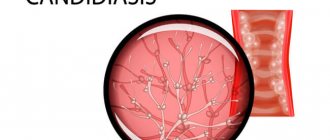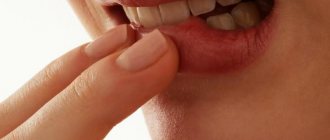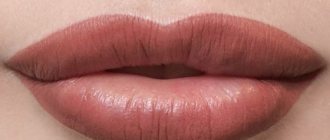The treatment of “fluxes” is carried out by a dental surgeon.
Do you feel afraid of the dentist?
Flux is the common name for any swelling in the cheek area and partly the neck - periodontitis, periostitis, complications of pulpitis and other inflammations. If you have inflammation of any origin or form, localized on the gums and in the oral cavity in general, you should definitely see a dentist.
Causes of swelling on the cheek
Many people believe that only teeth can provoke swelling of the cheeks. In fact, the reasons may be different.
Dental diseases
Factors related to oral health can provoke the problem. Among them:
- Eruption of impacted wisdom teeth, especially if the patient is over 25 years old. If the growth is abnormal, it is recommended to remove the “eight”.
- Stomatitis affecting the cheek, gums, tongue. The disease is most often diagnosed in children, but it can also occur in adults. An advanced disease provokes swelling. The cheek hurts from the inside, in the corner of the mouth.
- Gum disease, in which pathogenic bacteria accumulate in dental plaque, causing inflammation. Thus, gingivitis is accompanied by bleeding gums, swelling, and bad breath. If the disease is neglected, it will develop into periodontitis, a more serious problem.
Complications in the form of swelling of the cheek can develop after endodontic treatment. If during the procedure the canals are not washed and cleaned well enough, inflammation develops in the pulp chamber. The pathogenic process spreads to the bone, gum and cheek. This is how purulent periostitis develops, which is popularly called “flux”. If the disease is not treated in time, phlegmon and sepsis may develop, which pose a health hazard.
During the recovery period after tooth extraction, swelling of the cheek may also be observed. More often the symptom appears if the intervention was performed on the lower jaw. This problem often arises after implantation. This is the body's reaction to traumatic actions. It goes away in a few days. Otherwise, you need to consult a dentist, who must confirm or rule out the presence of a complication. It can develop due to infection getting into the wound, which threatens the manifestation of peri-implantitis.
Infectious, colds and other diseases
Cheek swelling is one of the symptoms of such diseases:
- Parotitis. When the disease occurs, the salivary glands become inflamed, which explains why soft tissues swell.
- Lymphadenitis. It occurs as an independent disease or as a complication of other ailments, such as diseases of the ENT organs. With lymphadenitis, the cervical, parotid and submandibular lymph nodes become enlarged, and the cheek becomes inflamed.
- Otitis, sinusitis, sinusitis. The inflammatory process can spread to the cheek, under the eye, and the area near the nose.
Pathological processes in gingival tissues often provoke inflammation of the salivary ducts and glands. It can also be an independent disease. It is caused by stones in the ducts, cysts, tumors.
The mucous membrane also swells with inflammation of the trigeminal nerve. In this case, other symptoms appear: numbness, pain radiating to the ear, “lumbago”. Swelling is a common occurrence in diseases of internal organs. Excess fluid due to malfunction of one or another organ accumulates in soft tissues, including the facial area.
Other causative factors
Swelling can also appear as a result of injury. This symptom accompanies soft tissue bruises, joint dislocations, and jaw fractures, which can be caused by a blow or fall. Children are more often susceptible to injury due to their excessive physical activity. Swelling can occur due to an allergic reaction, when the body shows immunity to a certain product. Other reasons:
- severe burn (both thermal and chemical);
- insect bites, which also cause redness and induration;
- poor oral hygiene.
Cheek swelling can occur in pregnant women. The fact is that during this period hormonal changes occur in the body. As a result, the gums swell, which is reflected on the cheek.
The mechanism of formation of swelling and bumps during a bruise
Immediately after the injury, the swelling is soft. It is growing quickly. After a few hours, the blood clots and a hematoma appears. Solidified blood is dark red at first, turning blue, then purple.
Hemorrhage has several mechanisms of spread. A cavity forms in the interstitial space, which fills with blood, or injured tissues become saturated with blood without forming a cavity. Swelling on the face is more pronounced than on other parts of the body. This is due to many capillaries and fat cells.
Symptoms of illness
Depending on the cause, symptoms may vary from case to case. More often with edema, the following symptoms appear:
- swelling on the cheek;
- pain in the causative area;
- difficulties in controlling facial expressions;
- inflammation of the mucous membrane.
It is important to monitor swelling. If it increases, medical attention is required. Reasons to urgently consult a doctor also include increased body temperature, general weakness, purulent discharge from the gums, loss of appetite, numbness and sagging cheeks.
Diagnosis and treatment
Usually a bruise is diagnosed by external manifestations. They conduct an examination of the skin, oral cavity, palpation, and anamnesis. If a jaw fracture is suspected, an x-ray is taken.
First aid is to apply cold water to the damaged area. Cold constricts blood vessels, stopping internal hemorrhage. If the skin is cut, the wound is treated with an antiseptic.
Medicines that help relieve swelling: Troxevasin, Heparin ointment, Indovazin, Dolobene gel, ointments with arnica, larkspur. Folk remedies to reduce swelling:
- cabbage leaf with honey;
- compress of grated potatoes, boiled beans;
- iodine network.
Swelling of the cheek on the inside: what to do
How to remove swelling of the cheek? Depending on the degree of manifestation of the unpleasant symptom and the etiology, different treatment methods are used. Their success depends on the correct diagnosis.
When swelling occurs after dental implantation, ice should be applied to the sore cheek. You need to rinse your mouth lightly. It is important to maintain hygiene, diet and spare the postoperative wound.
Drug treatment
The doctor prescribes medications taking into account the clinical picture and the causes of swelling after a comprehensive diagnosis. You may need:
- "Miramistin" and "Chlorhexidine" - for rinsing;
- "Suprastin" is an antihistamine;
- "Nimesil" is an anti-inflammatory drug;
- “Amoxiclav”, “Lincomycin” are antibiotics that are prescribed for acute purulent periostitis.
How to relieve the pain accompanying the causative disease? Hexoral solution or spray or Lidocaine Asept aerosol can help. The painful syndrome in a child is relieved with the help of products that are used during teething, for example, Dentinox.
In some cases, conservative treatment is not enough, so surgical techniques are used. If there is suppuration, the doctor opens the gum, exposes the cavity with pus and installs drainage to drain the exudate. Surgery is also performed in the presence of a neoplasm.
Inspection after first aid
After applying cold, the condition of the victim should be assessed. How big is the swelling? It's just a swelling or a big lump. What color is she: pale? Immediately flushed? Or is there a noticeable bruise? Where exactly did the swelling form: eye, cheek, lip, soft tissue? It is important to clarify whether there is dizziness or nausea. All types of swelling on the face after a blow can be divided into the following categories:
Soft tissue swelling
There may be swelling or bumps (on the forehead, cheeks, cheekbones), but their color will be pale or slightly pink. It's important to keep the cold as long as possible, but you shouldn't let your face get cold.
This swelling can be removed using ointments or folk remedies. As a rule, applying cold for a long enough time will effectively help relieve swelling and bumps. You need to hold it until the swelling goes away, this significantly reduces the possibility of a subcutaneous hematoma.
Swelling of the lip(s)
The lips are supplied with a large number of blood vessels, which makes the swelling very noticeable. In addition, delicate skin is more susceptible to tears than on the cheeks. Therefore, along with swelling, small wounds oozing blood often appear on the lips. To quickly remove puffiness, you need to follow these steps.
- Apply cold to the area of swelling.
- Treat the wound with an antiseptic. If the lip is too cut and the bleeding does not stop, a stitch may need to be placed.
- In any case, lubricate the swelling with a gentle ointment, but so that the medicine does not get into the open wound.
- Treat the wound until it dries. And apply medicine to relieve swelling.
Bruised eye
Swelling will occur around the eye, and this can happen even when the blow falls on the bridge of the nose or cheekbone. There are a large number of blood vessels around the eyes, and there is practically no adipose tissue. The likelihood of swelling and hematoma occurring here is very high.
In this case, it is important to immediately pay attention to whether redness has appeared in the eye. With this alarming symptom, two things should be done:
- Apply cold to the bruised eye.
- Contact an ophthalmologist immediately.
These actions must also be done when double vision, dizziness or nausea appear in the eyes.
In all other cases, swelling under the eye can be removed in the same way as in other places on the face. You just need to remember that the skin around the eyes is very delicate; applying the ointment should be alternated with fatty creams.
What not to do if your cheek is swollen
Before removing the swelling, so as not to worsen the situation, you need to understand what can be done and what cannot be done. If you are not sure of the cause of the swelling, you do not need to apply any compresses, neither warm nor cold, before visiting the doctor. Such actions are fraught with negative consequences. For example, when pus forms, a hot compress can accelerate the development of the pathological process. It is not even recommended to sleep on the sore side. You should also not disturb the swollen cheek, press or massage it.
You should not take painkillers immediately before your visit to the doctor. It can obscure the clinical picture and complicate the diagnosis. It is also prohibited to use any medications without a doctor’s prescription and supervision, especially antibiotics, which affect not only the cause of the disease, but also the entire body.
Some tips for treatment
What should I do?
- To treat swelling on the face, use a number of ointments of pharmaceutical origin: first of all, this is Troxevasin. It will not only help relieve swelling, but also promote the resorption of hematomas. It is possible to use Heparin ointment.
- It should be remembered that most pharmaceutical ointments are designed to relieve not swelling, but a hematoma (bruise) and are of little help in treating swelling.
- Cabbage leaf with honey is good for relieving swelling. You can put the cabbage through a blender (or grate it) and mix it in a 1:1 ratio with honey. Then apply the paste as a compress for 1.5–2 hours.
- Often, grated raw potatoes are used to relieve swelling. Or even circles as a compress. The duration of the compress is from 0.5 hours to 40 minutes.
How to prevent cheek swelling: preventive measures
To prevent the manifestation of an unwanted symptom, you must follow certain recommendations:
- Maintain good oral hygiene. It is especially necessary to monitor the child’s performance of all procedures. It is important to brush your teeth twice a day, use dental floss and mouthwash.
- Visit the dentist periodically - at least twice a year. If unpleasant symptoms occur, a visit to the doctor should be made immediately.
- Strengthen the gums and roots of the teeth by rinsing with herbal infusions and eating solid plant foods.
- Eat rationally and balanced. The body must receive the entire complex of vitamins and minerals around the clock.
No one is immune from problems, but preventative measures will help reduce the likelihood of their occurrence.
Consequences of a jaw bruise
Negative consequences of a jaw strike:
- tooth damage;
- inflammation of bone tissue;
- limitation of joint mobility;
- traumatic brain injury, concussion;
- deformation of the nose, which causes breathing problems, development of chronic sinusitis, rhinitis;
- inflammation of the hematoma;
- cyst formation.
A severe blow can cause asphyxia, shock, scarring, even disability if the eye or optic nerve is affected. Pain and hematoma can hide damage to the facial skeleton, especially during the formation of the periosteum.
No one is immune from such a nuisance - you may not be a professional participant in “fights without rules” and get hit in the face after a fall, as a result of unsuccessful braking and many other reasons. If you take care in a timely manner about how to remove swelling from the face after an impact, you can significantly reduce the consequences of the injury.
What to do immediately after being hit in the face?
The reason for the appearance of a tumor on the face after an impact is a violation of the integrity of the subcutaneous capillaries and tissues. The skin itself may remain undamaged, but blood and lymph from damaged vessels accumulate under the epidermis layer. In order to stop or minimize this process in time, you need to urgently apply cold to the site of the impact. Ideally, this is ice from the freezer, wrapped in a plastic bag and a linen napkin.
If there is no ice, apply the following to cool the impact site:
A napkin soaked in cold water, green tea (such a compress needs to be refreshed more often);
Copper or any other coin.
All these measures are applicable if the integrity of the epidermis is not compromised and there is no risk of wound infection. Applying cold is advisable in the first 15-20 minutes after injury; after a quarter of an hour, it will no longer be possible to prevent subcutaneous hemorrhage.










